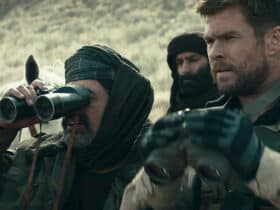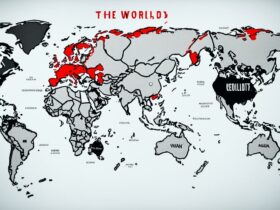Traditional Animation Techniques
Hand-Drawn Animation
Hand-drawn animation, also known as traditional animation, is the oldest and most traditional technique in the world of animation. It involves creating a series of hand-drawn images, known as frames, and playing them in sequence to give the illusion of motion. This technique requires immense skill and patience, as each frame is meticulously drawn by hand.Stop Motion Animation
Stop motion animation involves capturing a series of still images of physical objects or models and then playing them in sequence to create the illusion of movement. This technique can be further divided into various sub-techniques such as claymation, puppet animation, and cutout animation. Stop motion animation offers a unique charm and is often used in films with a distinct visual style.Claymation
Claymation is a form of stop motion animation that uses clay or other moldable materials to create characters and props. The animators manipulate the clay models, taking a series of photographs as they slightly alter the position of each object. When played back, the subtle changes in each frame bring the characters to life, giving them a distinct tactile appearance.Digital Animation Techniques
2D Computer Animation
2D computer animation involves creating characters and environments using computer software. Animators draw each frame using digital tools, allowing for smoother and more precise movements compared to traditional hand-drawn animation. This technique is commonly used in television shows, advertisements, and short films.3D Computer Animation
3D computer animation revolutionized the animation industry by introducing a new level of realism and depth. This technique involves creating three-dimensional models of characters, props, and environments, which are then animated using computer software. 3D animation is widely used in feature films, video games, and visual effects.Motion Capture Animation
Motion capture animation, also known as performance capture, involves recording the movements of real actors and translating them into digital characters. Sensors placed on the actor’s body capture their movements, which are then applied to the digital models. This technique brings a heightened level of realism to animated characters, capturing the nuances of human motion.Special Effects in Animation
Particle Effects
Particle effects are used to simulate natural phenomena such as fire, smoke, water, and explosions in animated films. By manipulating individual particles, animators can create stunning visual effects that enhance the overall realism and impact of a scene.Lighting and Shadows
Lighting and shadows play a crucial role in setting the mood and atmosphere of animated films. Animators use techniques such as global illumination, ray tracing, and shadow mapping to create realistic lighting effects and cast shadows that add depth and dimension to the animated world.Visual Effects
Visual effects are used to enhance or modify elements within a scene, adding an extra layer of visual interest. These effects can range from subtle enhancements like color grading to more complex transformations such as morphing or creating fantastical creatures and environments.Experimental Animation Techniques
Cutout Animation
Cutout animation involves creating characters and objects by cutting out various shapes from paper or other materials. These cutouts are then arranged and animated using stop motion or digital techniques. Cutout animation offers a distinct visual style and has been used in both independent and mainstream animated films.Pixilation
Pixilation is a technique that involves using live actors as stop motion puppets. The actors perform exaggerated movements, frame by frame, creating surreal and captivating visuals. This technique blurs the line between live-action and animation, resulting in a unique and eye-catching aesthetic.Rotoscoping
Rotoscoping is a process that involves tracing over live-action footage frame by frame to create animated sequences. This technique blends the realism of live-action with the artistic interpretation of animation, resulting in a visually striking combination.Combining Techniques for Visual Impact
In many animated films, multiple techniques are combined to create a unique visual style and enhance storytelling. For example, a film may use a combination of hand-drawn animation and digital effects or incorporate stop motion with 3D computer animation. The possibilities are endless, and animators continue to push the boundaries of what can be achieved through these combinations.Evolution of Animation Technology
Animation technology has evolved significantly over the years, enabling animators to create increasingly realistic and immersive worlds. From the introduction of computer animation to the advancements in rendering techniques, technology has played a crucial role in shaping the art of animation.The Role of Animators in the Filmmaking Process
Animators are the creative minds behind animated films, responsible for bringing characters and stories to life. They work closely with directors, storyboard artists, and other members of the production team to create visually stunning and emotionally engaging experiences for the audience.Animation in Different Genres
Animation is not limited to a specific genre. It has been used to tell stories in various genres, including fantasy, comedy, adventure, science fiction, and even documentaries. Each genre presents unique opportunities and challenges for animators, allowing them to explore different artistic styles and narrative techniques.The Future of Animation
As technology continues to advance, the future of animation looks promising. Virtual reality, augmented reality, and real-time rendering are just a few of the emerging technologies that hold the potential to reshape the animation industry. These advancements will open up new creative possibilities, enabling animators to push the boundaries of their imagination further.Exploring the World of Zootopia Movie
Conclusion
Animation techniques in animated films have evolved tremendously over the years, captivating audiences with their unique visual styles and storytelling abilities. From traditional hand-drawn animation to cutting-edge digital techniques, animators continue to push the boundaries of creativity and innovation. As technology advances, the future of animation holds endless possibilities, promising exciting new experiences for audiences around the world.What Animation Techniques Were Used in the Titanic Movie?
When delving into the world of animation, the titanic movie secrets revealed various techniques employed to bring the fictional tale to life. The film utilized a combination of computer-generated imagery (CGI) and traditional hand-drawn animation. While CGI helped create the magnificent ship and realistic water effects, hand-drawn animation captured the intricate details of the characters’ facial expressions and emotions. By blending these techniques seamlessly, the Titanic movie mesmerized audiences with its visually stunning portrayal of the ill-fated voyage.











